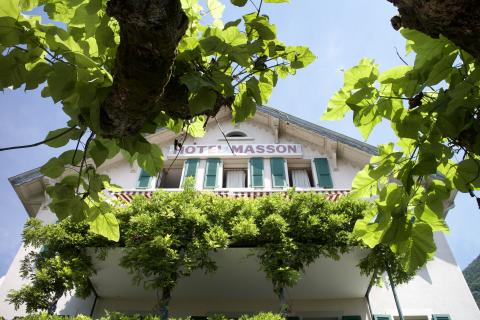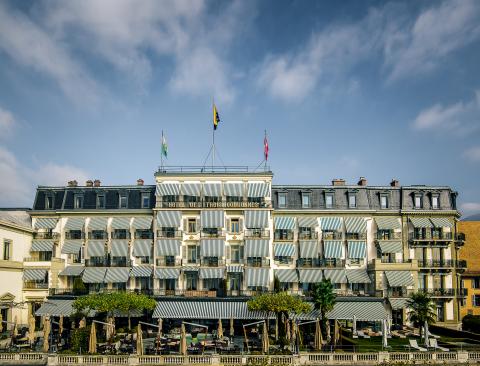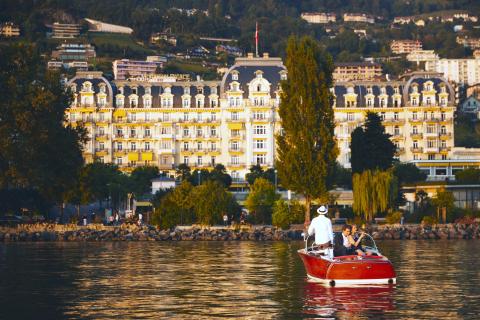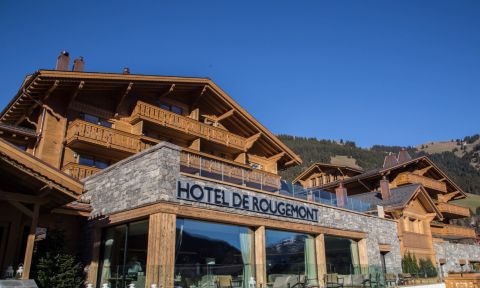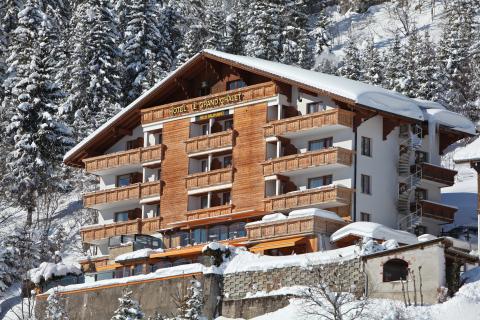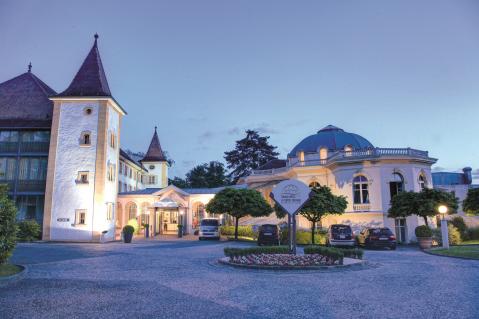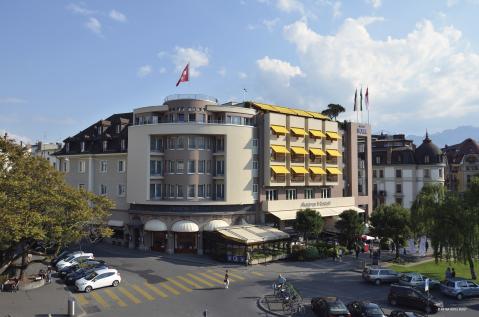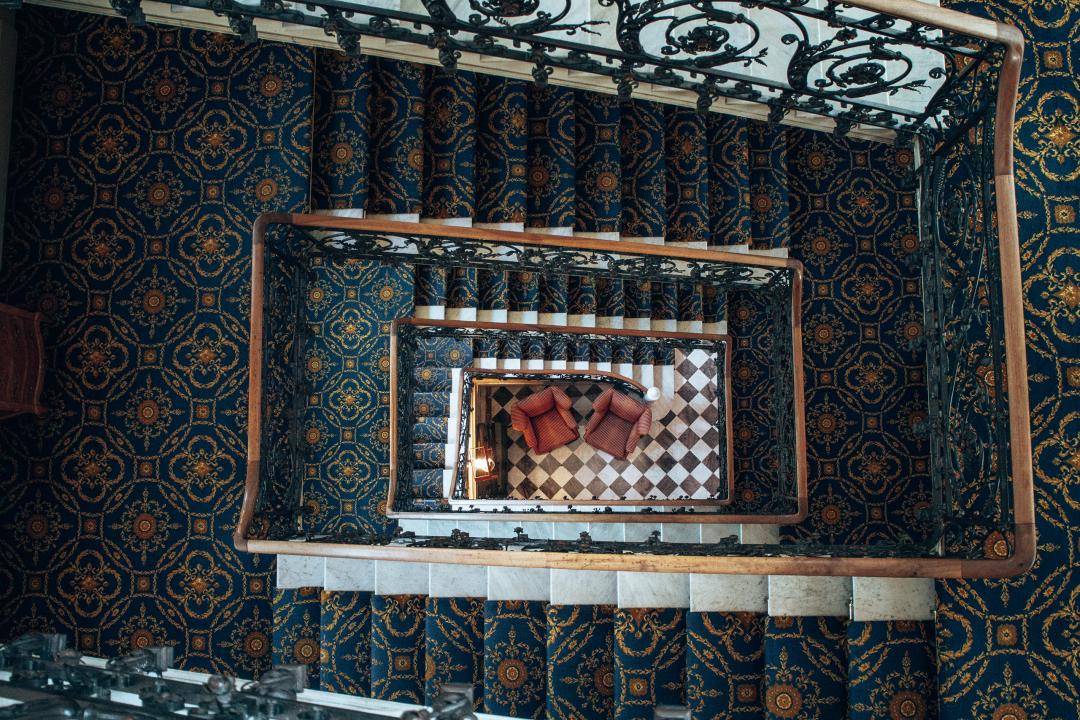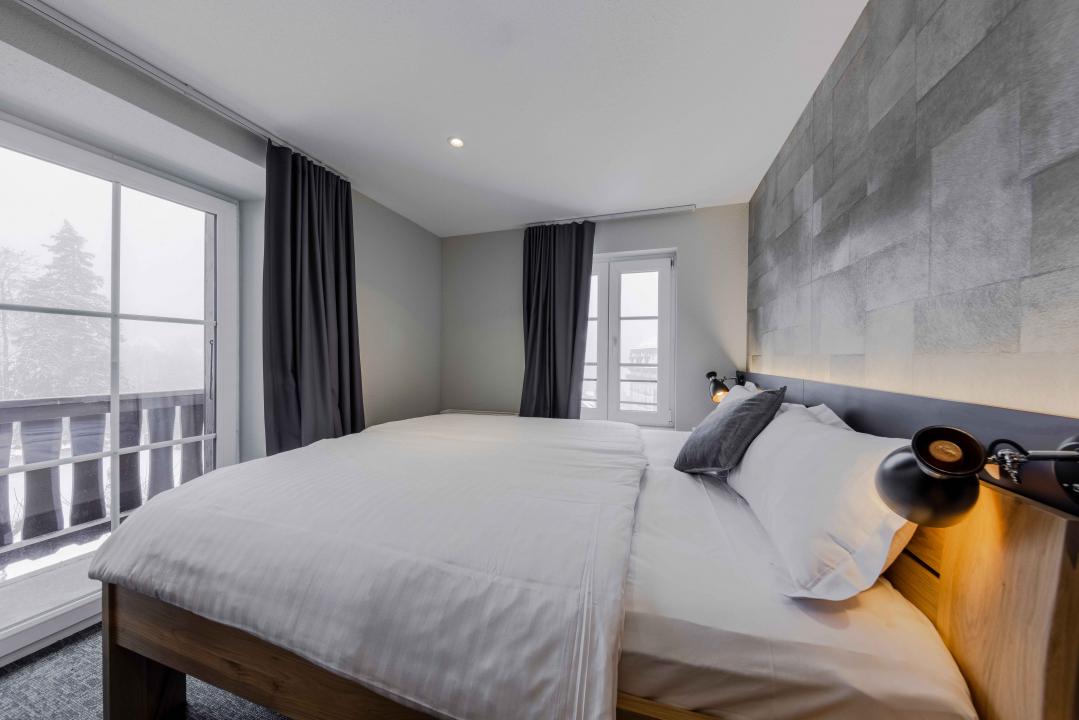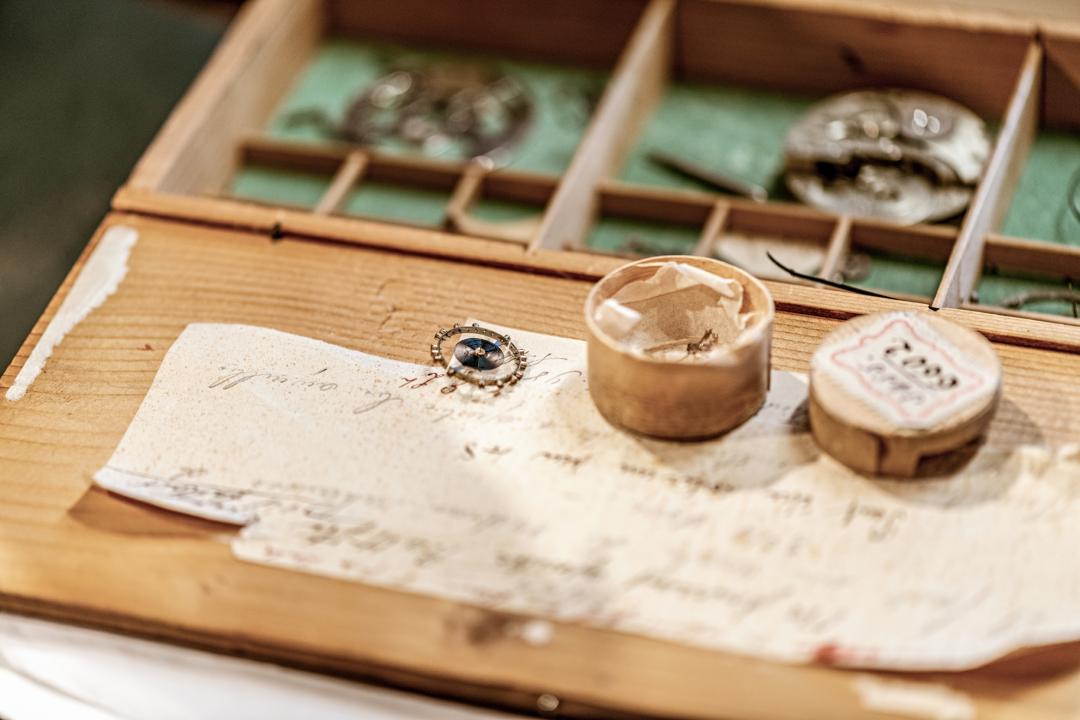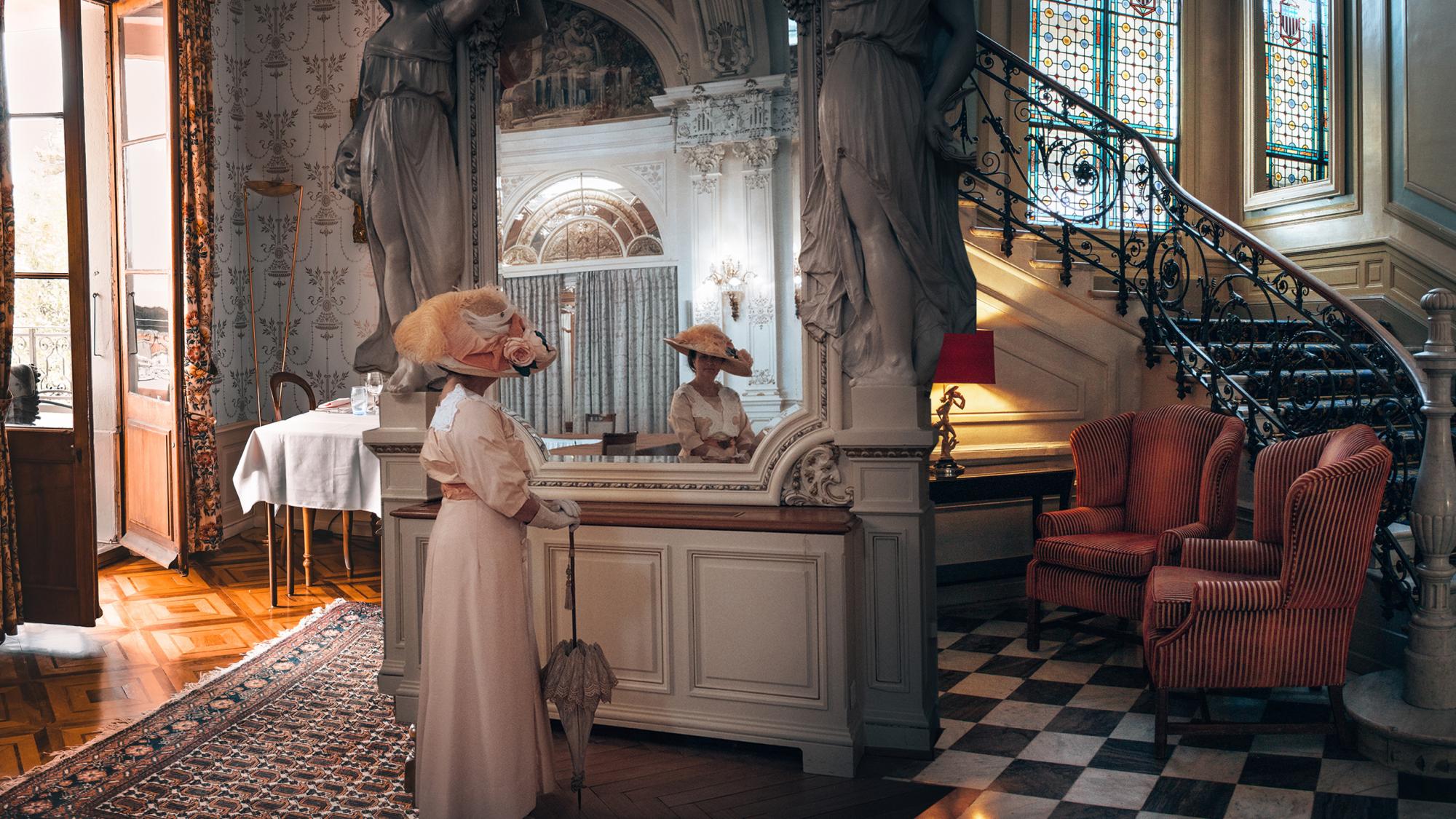
Historic hotels in the canton of Vaud a heritage to be experienced
Some Vaud hotels were built more than 100 years ago. Discover their history.
Staying in a historic hotel is like spending a night in a museum where period artefacts are part of our daily life. From the moment you cross the threshold, you feel like in a film! Walking through a corridor, ballroom, or luxury room, you can almost imagine beholding a crowned head, celebrity, or film actor. Indeed, several hotels have served as film settings. Historic hotels in the canton of Vaud are anything but rusty and dusty. They combine their glorious past with ultramodern infrastructure and services.
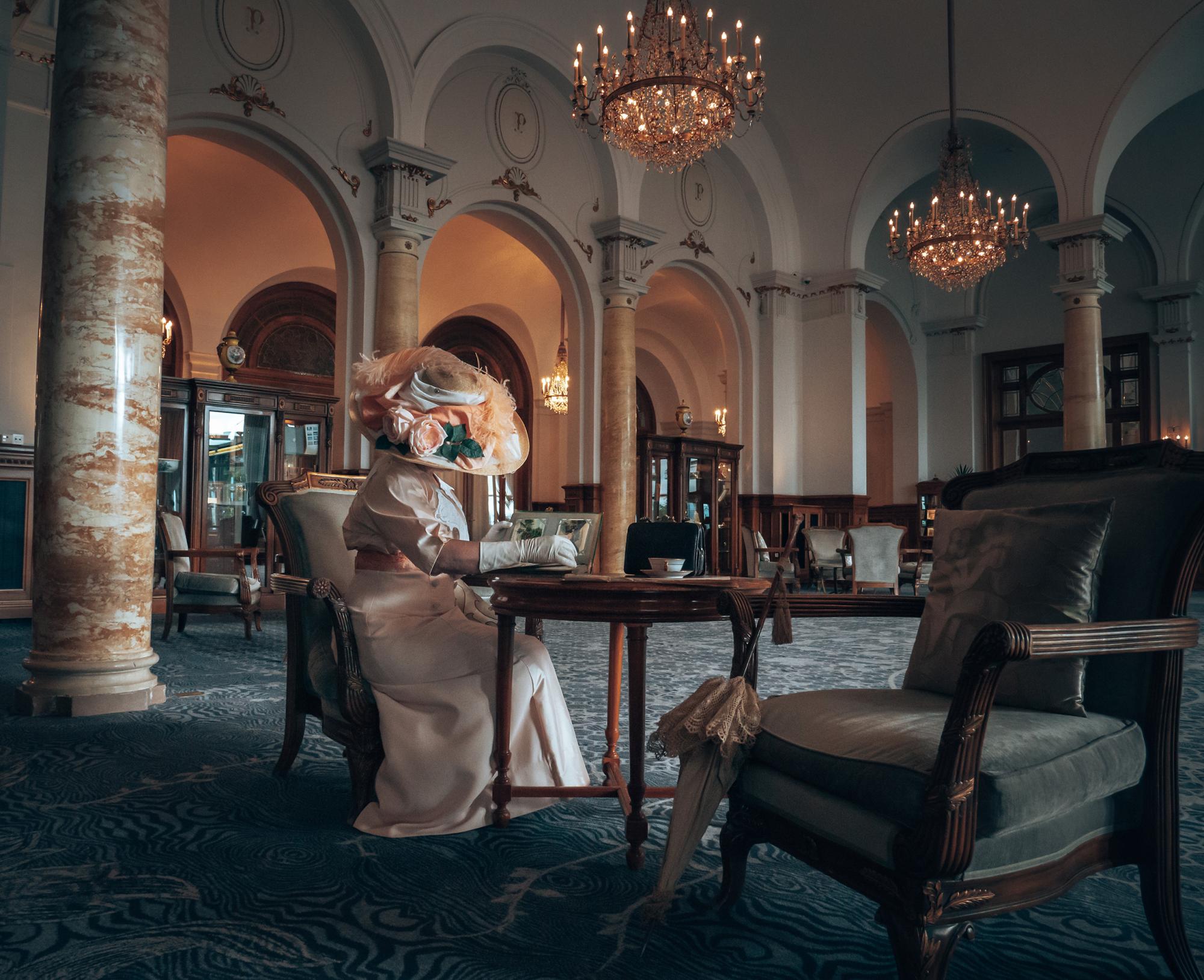
Historic hotels in the Canton of Vaud - An heritage to be experienced
Historic hotels are becoming more and more successful because we return to the source, we want to see how life used to be.
Elegant, cosy, peaceful and sumptuous: Each historic hotel in the canton of Vaud reflects the period in which it was built and thus preserves its very own atmosphere. Are you looking for a novel atmosphere? Do you and your family want to be pampered? Or do you wish to experience the splendour of the palaces made famous by the noblemen of the 20th century? An overnight stay at such a hotel turns into an unforgettable experience.
Historian, archivist and Swiss hotel history expert Evelyne Lüthi-Graf is playing our guide. She describes hotels ranging from the Hotel Masson – the oldest family guest house that’s still open – to the Montreux Palace – the flagship of the Belle Epoque – thus: “Historic hotels are becoming more and more successful because we return to the source, we want to see how life used to be. Today, there is almost no more “fake old” in Switzerland. Tourists sometimes use the word “sets”, But these aren't sets!”
So, the stories we’re going to tell you about four of these hotels are real and stand for the beginning of tourism in the canton of Vaud. Food for thought for your next visit to one of these iconic establishments, in the footsteps of visionary builders and illustrious guests.
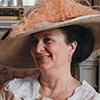
Evelyne Lüthi-Graf
Historian, archivist and Swiss hotel history expert
Evelyne tell us about the Belle Époque
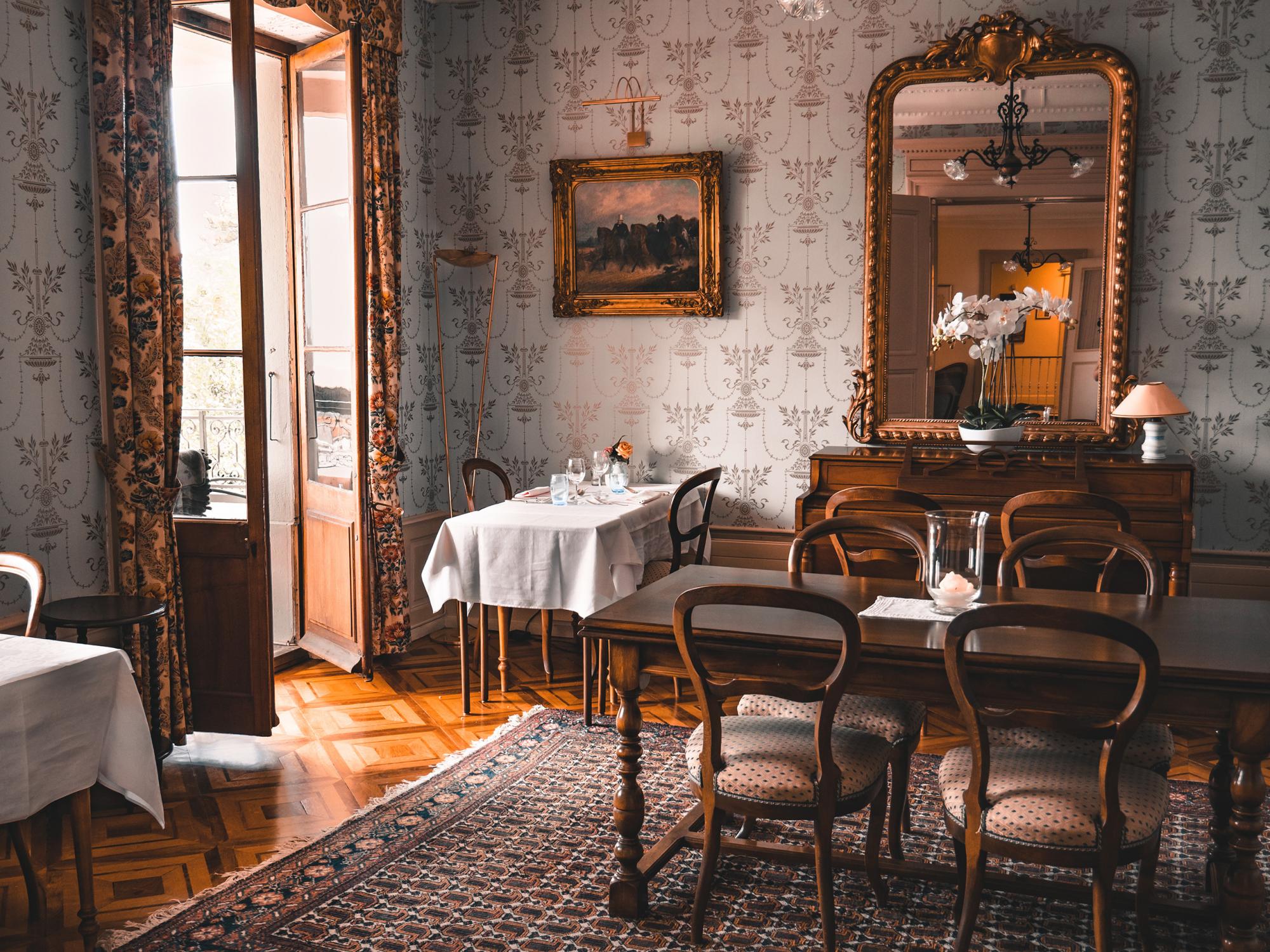
Hôtel Masson, the oldest guest house still open to tourists
Made famous by the poet Lord Byron, Chillon Castle™ has been attracting tourists since the publication of his poem “The Prisoner of Chillon” in 1816. In those times, hotel infrastructure was virtually non-existent. Visitors stayed in the homes of clerics and farmers, but above all winemakers, because they were sure that the host would serve them a glass of wine. Like Jean François Masson, a winemaker from the village of Veytaux, which is only minutes away from Chillon Castle™. He started welcoming travellers to his house that was built in 1829. Some 25 years later, his daughter Elise became the manager of the guest house and added balconies with a view of Lake Geneva.
Furniture that is 180 years old with contemporary objects such as lamps.
Even today, Hôtel Masson bears traces of the various periods of its history: “Furniture that is 180 years old with contemporary objects such as lamps. The bathrooms remade in the Seventies also reflect a story.“ Evelyne Lüthi-Graf openly displays her attachment to these premises. “You feel like in a film. Hôtel Masson is a family hotel. It’s ideal for spending a holiday with your family in a cosy, pleasant environment. But not anonymously. The owners and their children know you.”
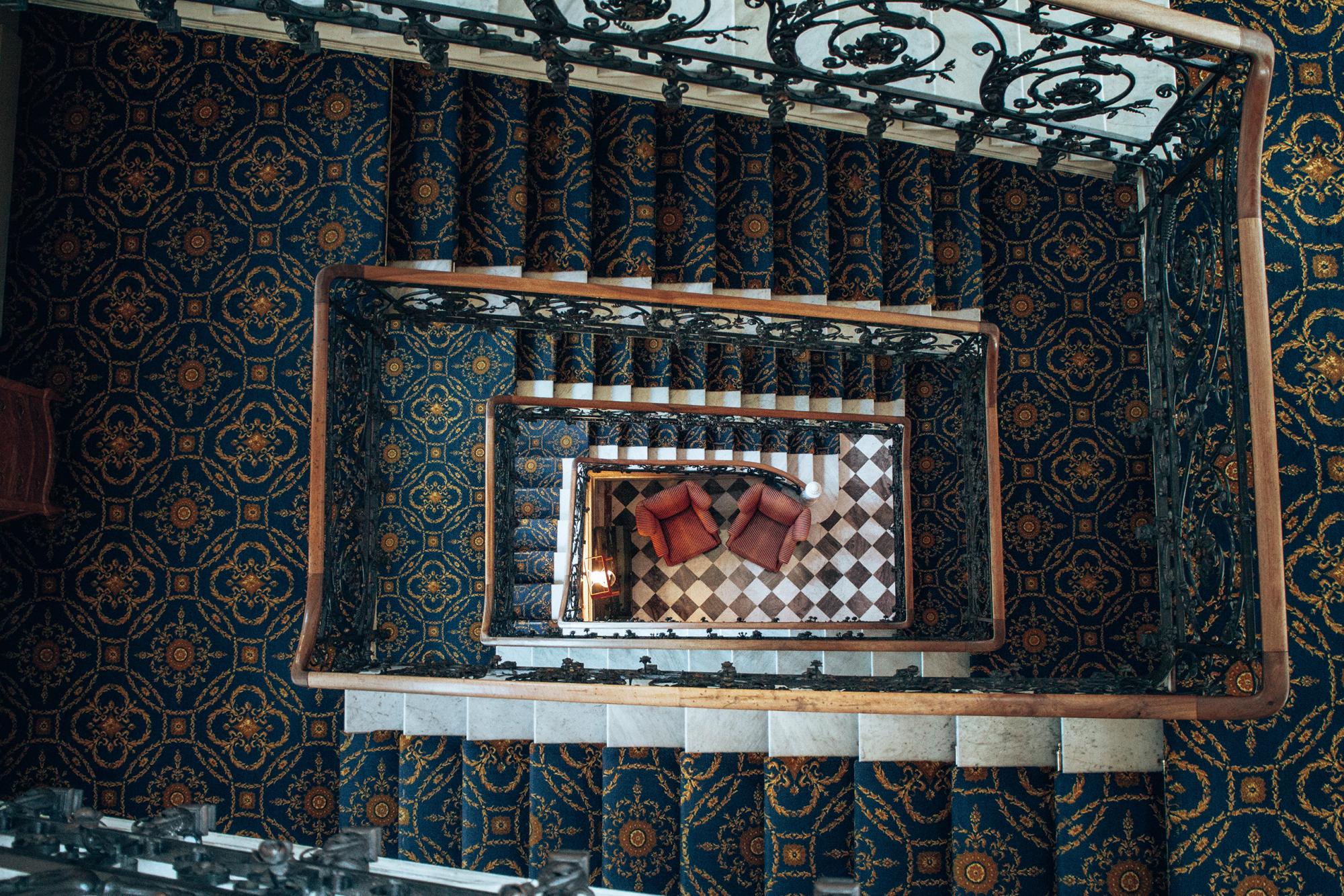
Hôtel des Trois Couronnes, one of the first Swiss Grand Hotels
Inaugurated in Vevey in 1842, Hôtel des Trois Couronnes is one Switzerland’s oldest Grand Hotels, where you can still stay today. Unlike Montreux, Vevey was a thriving city with many shops in the 19th century. There were already several inns that received business travellers.
“Hôtel des Trois Couronnes was a city building that was transformed into a hotel by a family that understood that travellers’ aspirations went beyond the offering at an inn,” explains Evelyne Lüthi-Graf. “They made a large hotel out of the existing building based on an ancient, very classical model. It’s one of the only ones to still have an atrium with a light shaft. Hôtel des Trois Couronnes was partly built on one of city’s medieval walls. The promenades of Perdonnet and Maria Belgia are false. The true town border is still visible in the five-star spa.”
Hôtel des Trois Couronnes was partly built on one of city’s medieval walls.
Evelyne tell us about historic hotels and their customers
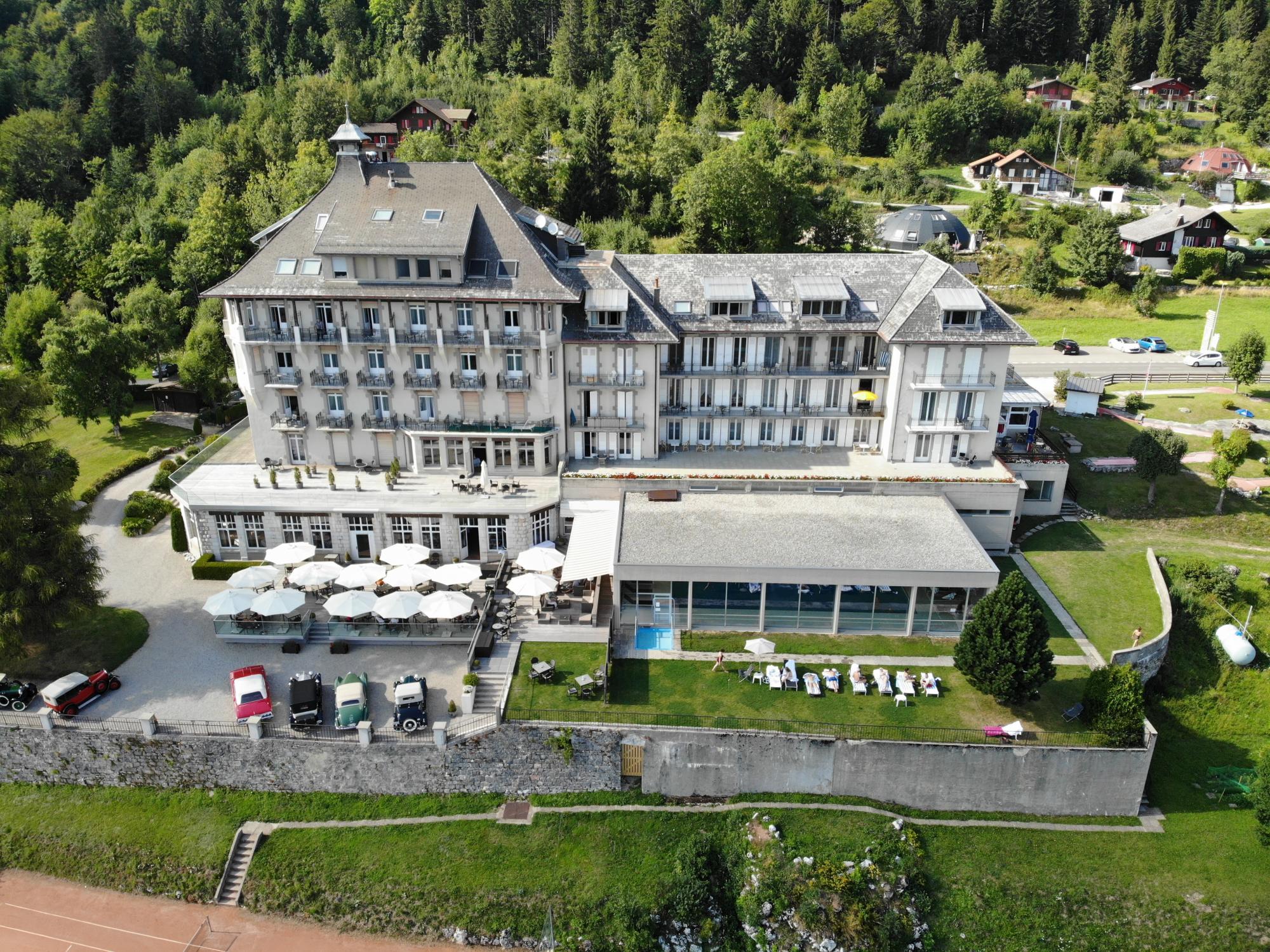
Grand Hôtel des Rasses, the beginnings of the Belle Epoque in the open air
The Belle Epoque, which is often mentioned when retracing the history of tourism, began in the late 1880s. It characterised a huge change in society, as Evelyne Lüthi-Graf explains: “Everything was booming: Technological means, travel, society, the middle class that was making money with sugar, the railways… An entirely different society was starting to travel: a society of means that wanted to show off its wealth. Aristocrats had always been travelling, so it was nothing new to them. At first, they were embarrassed to be considered the same as commercial travellers, bourgeois, etc. Hoteliers had to cope with that, they had to adapt."
The period was also marked by the scourge of tuberculosis. Tourists arrived in droves to Switzerland, where visitors already came for their health. The need for fresh, invigorating air was stronger than ever… This is why Edouard Baierlé, a hotelier in Yverdon-les-Bains, took an interest in the nearby resort of Les Rasses. “Baierlé witnessed this development. He realised that people increasingly wanted to go the mountains.”
Baierlé witnessed this development. He realised that people increasingly wanted to go the mountains.
The classic Grand Hotel des Rasses thus opened in 1898. As its design corresponded to a hotel in the plain, it was the perfect compromise between a grand hotel and a mountain inn. A more modern annex was added in 1913. Attached to preserving the historical character of the three-star hotel, the current owners value period furniture to offer their guests an out-of-time experience. Today’s visitors to the Grand Hotel des Rasses have the same aspirations as in the olden days: spending quiet moments with their family at high altitude and in the open air.

La Belle Epoque at the palace
The Montreux Palace was built when the region was in full tourist swing and stimulated by newly rich bourgeois families. “People came here to see the country but above all to see other people with the same status. This is why there was a “guest list”, in which the hotels published the names of their customers!”
Again adapting to their customers’ needs, hoteliers started to offer meeting places. “People started to use the lobby of the Montreux Palace. The bar was visible, and the palace was linked to all outdoor and indoor activities: Restaurants, events room, etc. That’s Montreux Palace: a luxurious hotel where you don’t stay in your room.”
That’s Montreux Palace: a luxurious hotel where you don’t stay in your room.
Evelyne tell us about Eugène Jost
We owe this Belle-Epoque jewel to the architect Eugène Jost, whom Evelyne Lüthi-Graf presents thus: “Jost learnt his trade in Paris. He was what was then called a fine arts architect. At first, the architect was a technician, which we would call an engineer today. Later, people realised that technology and beauty went well together. This is when many architects went to Paris to study fine arts.” But the Montreux Palace is mostly the work of Alexander Emery, an illustrious member of a dynasty of hoteliers. “Emery was instrumental in creating the Swiss hotel offer and the Swiss Tourist Board. Yes, hoteliers made Switzerland! But also the tourist regions such as Lucerne, Ticino, the Riviera, and a part of the Valais valleys… we tend to forget that…”
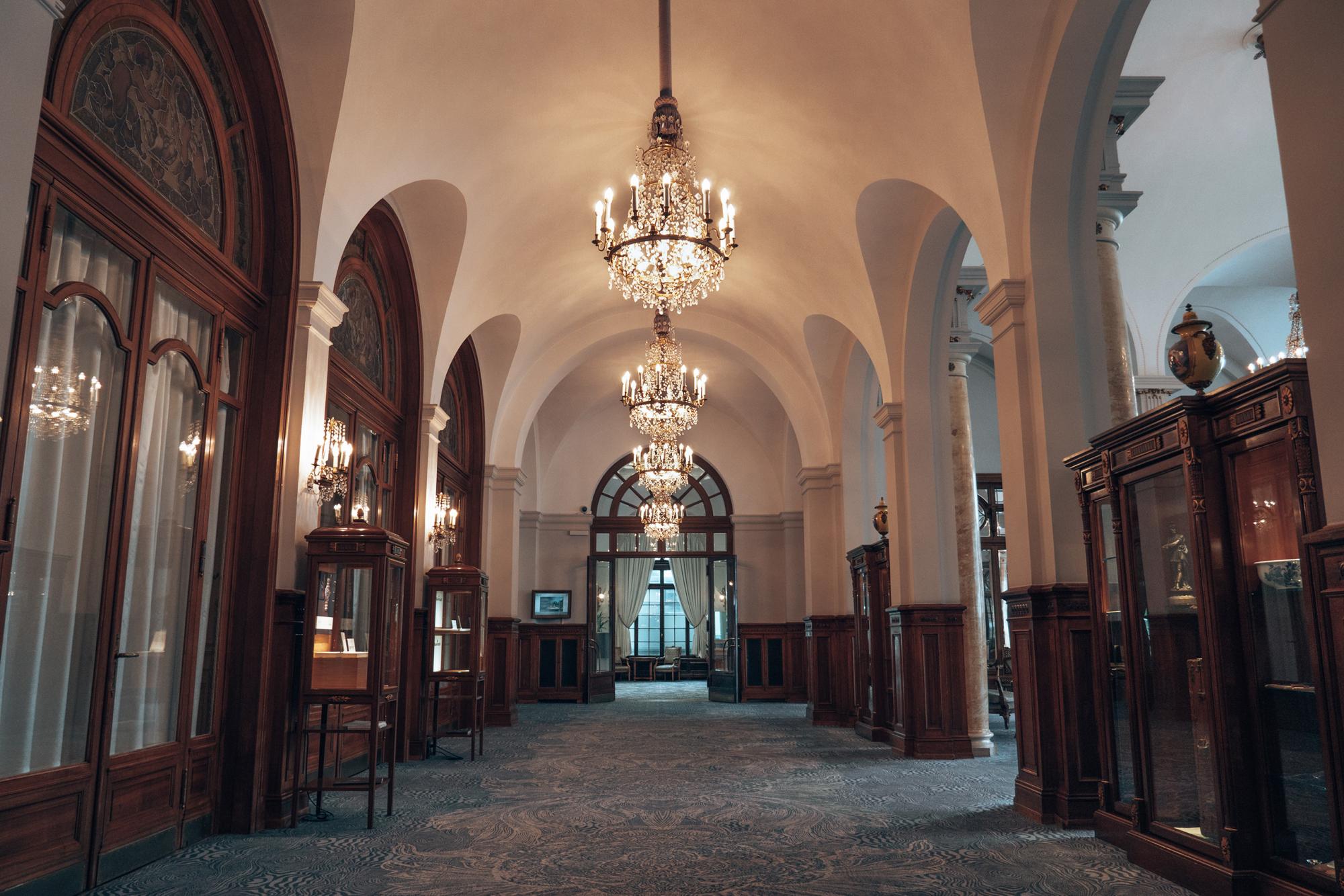
Hoteliers as builders
Listening to Evelyne Lüthi-Graf, we feel deep appreciation for all those visionary hoteliers who did so much for the development of the region: Elise Masson, Alexandre Emery and Edouard Baierlé. The hotel industry expert confirms: ”We owe everything to these hoteliers. It should be said out loud: A big thank you to these hoteliers because it is thanks to them that we have electricity, running water, railways, mountain trains...”
We owe them everything, the hotel owners, and this is no exaggeration
Evelyne tell us about about the hotel owners
Indeed, in 1875, the shores of Lake Geneva were already equipped with running water, while the telegraph and railway network were becoming more efficient. All this is due to the construction of hotels: “The proof is that in places where there are no hotels, running water, electricity, telephone and telegraph were added only much later.”
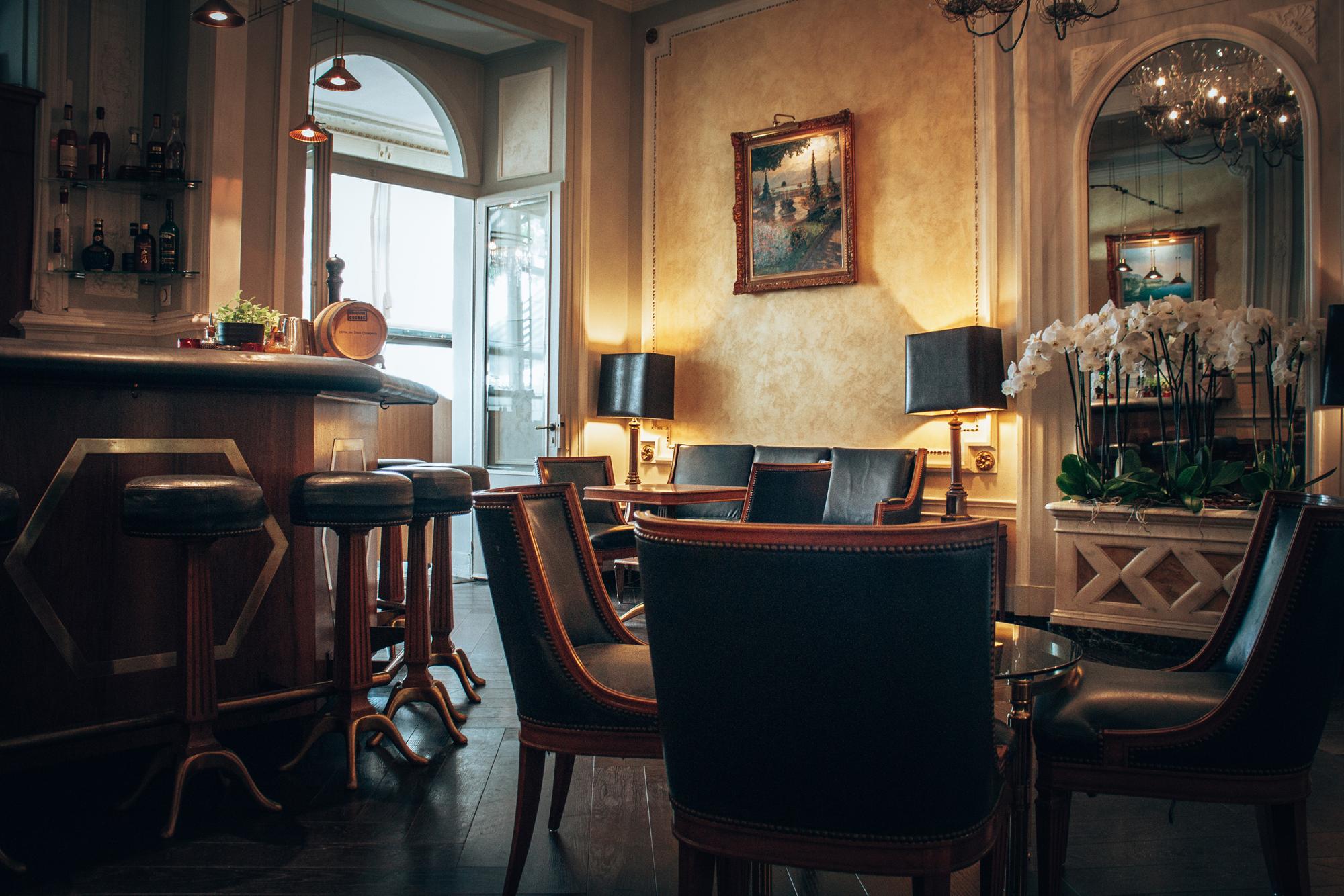
It's like in a film...
Our journey with Evelyne Lüthi-Graf incited us to make our own discoveries because historic hotels are above all places of life and experience and then witnesses to history. “We go to a historic hotel because we want to have an experience. It's like going to see a film at the cinema. We go to a historic hotel because we love the historical films made in them, because you can eat and sleep in the premises of a film setting, which have been preserved and are being valorised.”
The challenge for the owners is to explain that it isn't dusty, it’s more like a museum. The guests agree to be in a historical setting, so there are traces on the parquet floors, but these traces are like our wrinkles.
Incidentally, isn’t preserving these historic sites a huge challenge? “The challenge for the owners is to explain that it isn't dusty, it’s more like a museum. The guests agree to be in a historical setting, so there are traces on the parquet floors, but these traces are like our wrinkles. What’s on offer here is a historic hotel, one that’s 100 years old. The furniture is old, but the mattresses are new, and everything is cleaned just like in other hotels.”
These historic hotels have so much to offer. Romantic souls will be swept off their feet by the atmosphere of a yesteryear story. Curious people will learn an anecdote behind each object. Everyone can turn their stay into their own history.
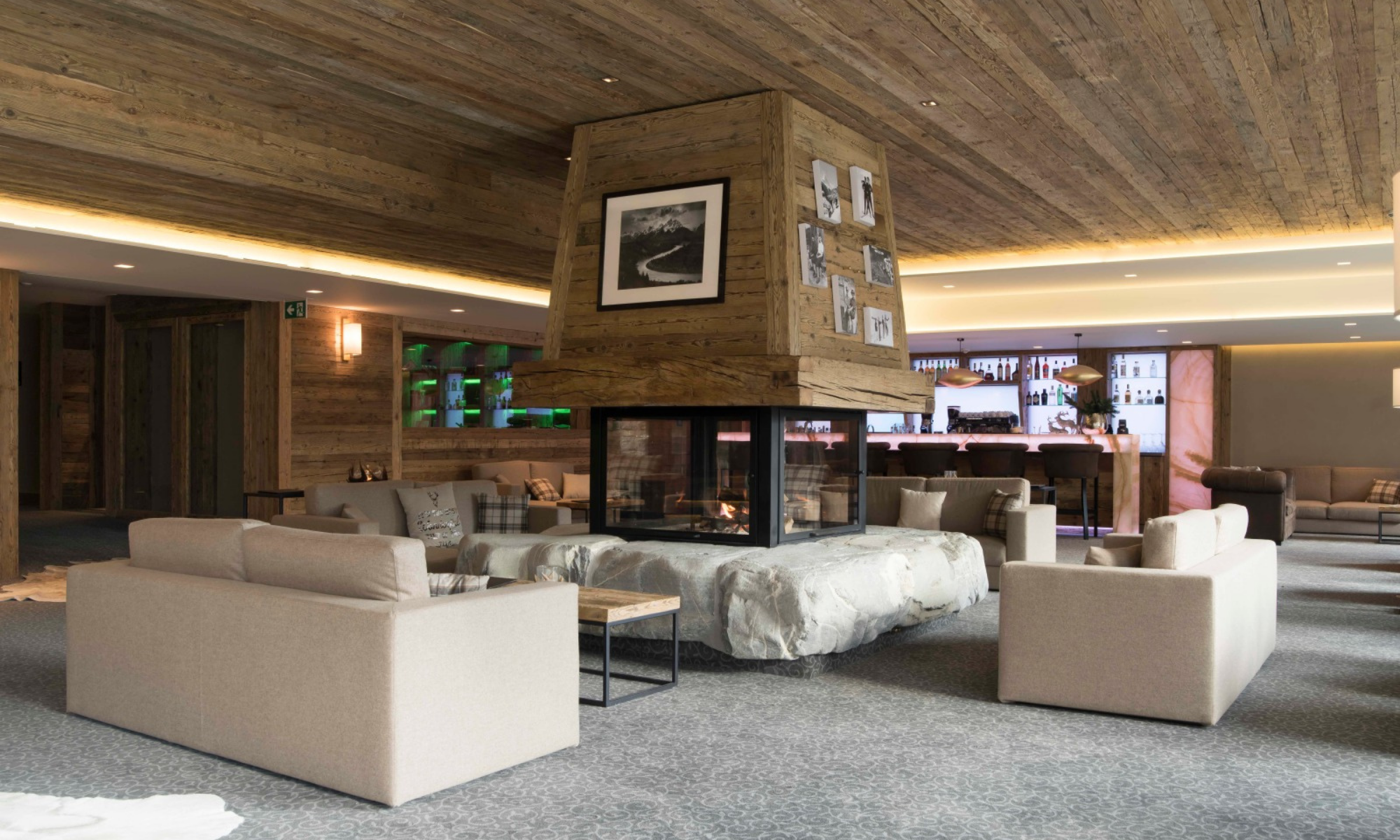
What about the Alps? The unsung history of the Swiss chalet
The Swiss chalet is known worldwide as one of the emblems of our country. It has inspired hotel architecture in the Alps since the advent of tourism. But the authenticity of the chalet and even its name are controversial! The word “chalet” means “shelter”. It originally referred only to the buildings that provided shelter to high-altitude farmers. These huts were secluded and surrounded by beautiful alpine landscapes. They inspired many painters and writers who were among the first visitors to the Alpine summits. Their works helped spread the cliché image of the chalet as it is still known today: A mostly cubic wooden building that is set on a stone base and topped with a two-sided roof bearing some decorations.
The Swiss village
But in the end, it was the Swiss themselves who finally spread the dream image of the Swiss chalet as a typical national architecture! At the second national exhibition in Geneva in 1896, a “Swiss village” formalised the chalet as the reference home for most of our fellow citizens. The successful Swiss village was immortalised and quickly became known throughout the world. At the end of the 19th century, the mountain world enjoyed a tourist boom with the arrival of bourgeois visitors who got rich through the new Belle-Epoque technologies. Hoteliers made every effort to please travellers. The buildings were built either in a classical style that the first tourists wouldn't find outlandish or in the new Swiss style everyone was talking about.
Grand Chalet in Leysin and Hôtel de Rougemont & Spa
Built in Leysin in 1896, the Sylvana guest house changed its name to Grand Chalet in 1992. The Swiss chalet tradition still has fine days ahead. During its last complete renovation, the Grand Chalet recovered all the warmth old wood has to offer, both in its rooms and shared areas. Even new high-quality buildings such as Hôtel de Rougemont & Spa combine their large balconies and terraces and their noble materials with the well-known characteristics of a Swiss chalet: wood, stone and, above all, a warm atmosphere. The Swiss chalet has succeeded in making us forget about its stigmatised history, thanks to its atmosphere that takes us on holiday straightaway!
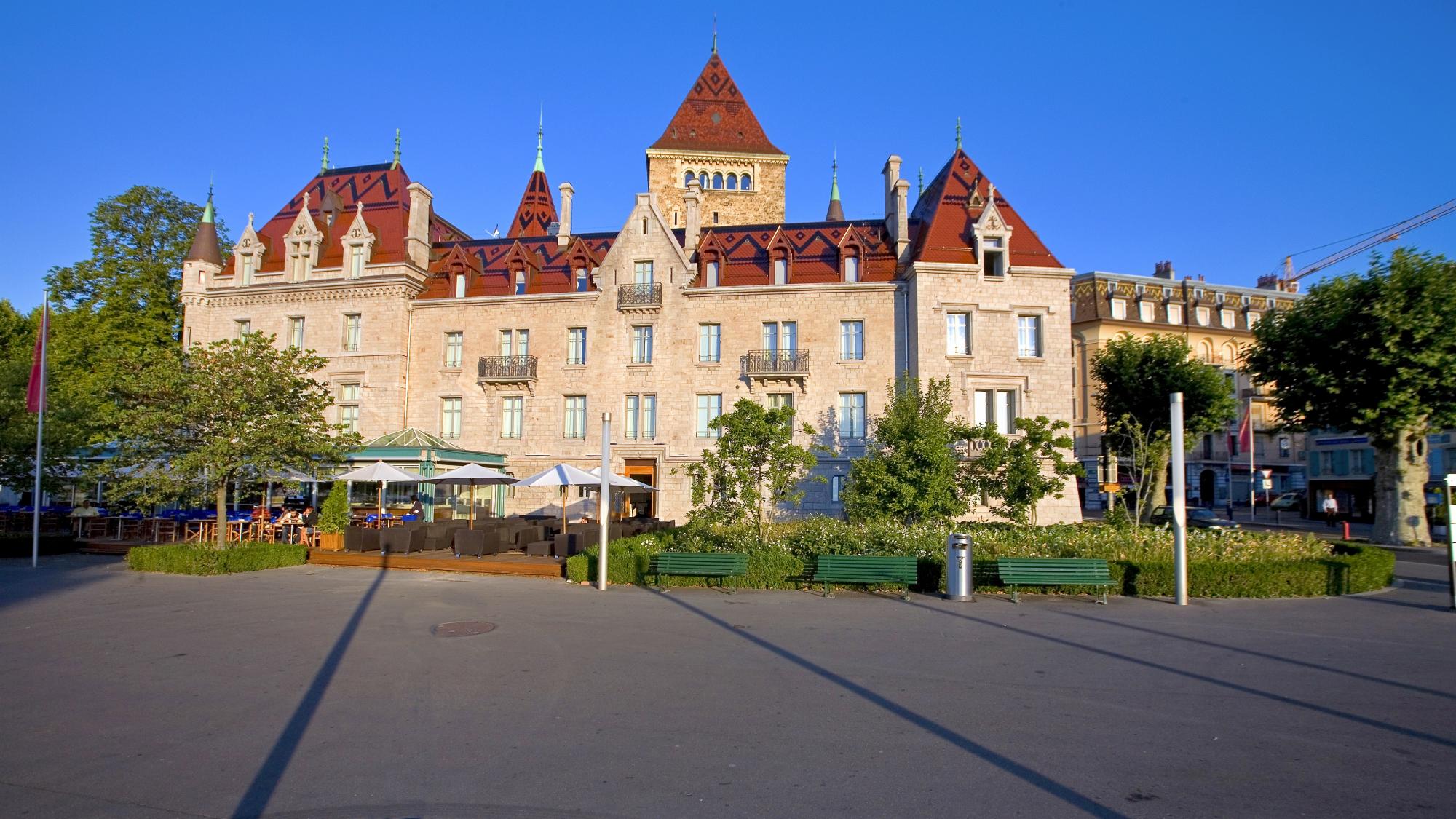
These historical witnesses that lend us their walls
Enchanting medieval castles are often used as museums nowadays. The ones offering places of stay are far and few between. One of them is Château d’Ouchy, an ideally located four-star hotel on the shores of Lake Geneva in Lausanne. The silhouette of Château d’Ouchy greets us in style, whether we arrive in this Mediterranean-type neighbourhood by boat or car.
The castle has retained its original keep dating back to the 12th century. The rest of the building was renovated between 1889 and 1893 in a neo-Gothic style. This was the time when the Beau-Rivage Palace already existed a few meters away. But it did not yet have the grandeur it enjoys today, with a second building added in 1908. Enjoy an authentic medieval experience in the Chevalier Suite and the Riviera Suite of Château d'Ouchy, which treat their guests like royalty!
The town of Yverdon-les-Bains on the shores of Lake Neuchâtel has been renowned for its thermal springs since Roman times. Over the past 2000 years, residents and tourists have been able to enjoy the benefits of the spa water of a temperature of 29°C. The Grand Hotel des Bains is older than its adjoining spa. The town of Yverdon-les-Bains started to be built it in the years of 1730. This was to meet the demand of English tourists who rediscovered the joys of thermal water. The splendid Belle-Epoque rotunda (1896) is still visible today. In June 2019, the current owners of the Grand Hôtel des Bains and the spa announced major three-year renovations to modernise the buildings, which remain open throughout the construction.
Back on the shores of Lake Geneva, the historic La Coupole brewery of the Astra de Vevey hotel is also well worth visiting. Dating from 1912, the hotel is decorated with stained glass and frescoes in honour of previous Vintners’ Festivals, a mythical traditional celebration that is only held four times a century!
